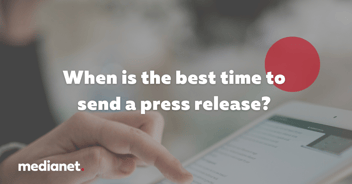Press Release or Press Delete: Five Things Journalists Hate
 Press releases are a great source of content for journalists. But when your target audience has made their living out of impeccable grammar, writing style and headline prowess, there are a few ‘don’ts‘ that will take your story from press release to press delete.
Press releases are a great source of content for journalists. But when your target audience has made their living out of impeccable grammar, writing style and headline prowess, there are a few ‘don’ts‘ that will take your story from press release to press delete.
To help you build productive relationships with journalists, here are five things we should all avoid when writing and submitting press releases:
1. Don’t make mistakes
Journalists make their livelihood from writing perfectly and have very little tolerance for spelling mistakes and grammatical errors.
If you haven’t used the Microsoft-given gift of spellcheck or are the only person that has read the press release before you hit send, a journalist may end up hitting delete just as quickly. Spellcheck (and save) are the two most important word processing functions for your press release.
Secondly, always have someone else read your press release. The little mistakes that won’t be picked up by spellcheck can often be the worst. Avoid typing your release on smart devices with the all-too-clever autocorrect that will change well-intended words into hilarious autocorrect fails (trust me – I once drafted an email to “Dear Tiny” (nee Tony) and signed it off “Regards Satan” (nee Sarah).
2. You call that a headline?
Through the hallways of AAP, you occasionally see the glorious pat on the shoulder and hear echoes of “what a great headline”. Headlines mean everything to journalists…
A great headline can do two things for your story. First, it sells it straight away. Second, it summarises your entire pitch in just a few words. The key is to keep it short and make sure it reflects your news angle. Deceptive headlines or headlines that don’t inspire the journalist to read further could turn your press release into press delete.
3. They sound like an infomercial…
“Never seen before”, “This will be an amazing event”, “we are delighted to announce”, “it’s a fun way to raise money’, “trendy new”, “market leader”, “the most innovative”, “consumers will love it”…
Will they love it? Who are your consumers? When was the last time you read an article that name-called you a consumer and told you how you would feel about something? Leave that to the advertising department and ensure your story is something journalists and ultimately, you, would want to read. We are often too close to our own products or organisations to hear what we actually sound like. With a great angle and without the heavy promotional push you will be more likely grab and maintain the attention of journalists.
4. Don’t forget the little things…
I knew someone who became incredibly incensed when no one got back to her about her compelling, strong-angled press release. A week later she realised she had made a mistake in her own phone number.
Ring your own phone number: it will allow you to check if the number you have written down is correct and will give you a chance to listen to your own voicemail. Unprofessional voicemails can be very discouraging. If you send a press release with embedded links, ensure that there are no broken links and check them regularly as journalists may look at your press release days after it has been sent. Don’t put strange images in your email signatures and never use emoticons.
If you want to attach images, ensure they are the correct resolution for publishing both online and in print. Be mindful of the file sizes – editorial organisations quite often have size limits for emails. Use a distribution service or host your multimedia and press release online so journalists can download your media in their preferred format and resolution.
Last but not the least: do not use your personal email. Use a professional one that states your first name or initial, and last name.
5. Did you get my email?…
Would you call your boss immediately after sending them an email and say “Did you get my email?” If you call a journalist just minutes after sending your press release and ask “Did you get my press release?” you can almost guarantee the answer will be no…
Journalists are busy and (unfortunately) do not sit around waiting for your press release. Following up is a great way to further communicate your angle and make your pitch but the timeliness of the call is everything.
Most press releases have a longer lifespan than we give them credit for (mainly because we want results immediately). If your press release is time critical, make sure you have distributed it via a Newswire so your release appears alongside the day’s breaking news. If your story has some longevity, journalists will be able to find your release in their inbox or press release database.
Spend your time making sure you have written the best possible press release, targeted the right people, and are ready to answer all of the questions the journalists might have when they call you.




